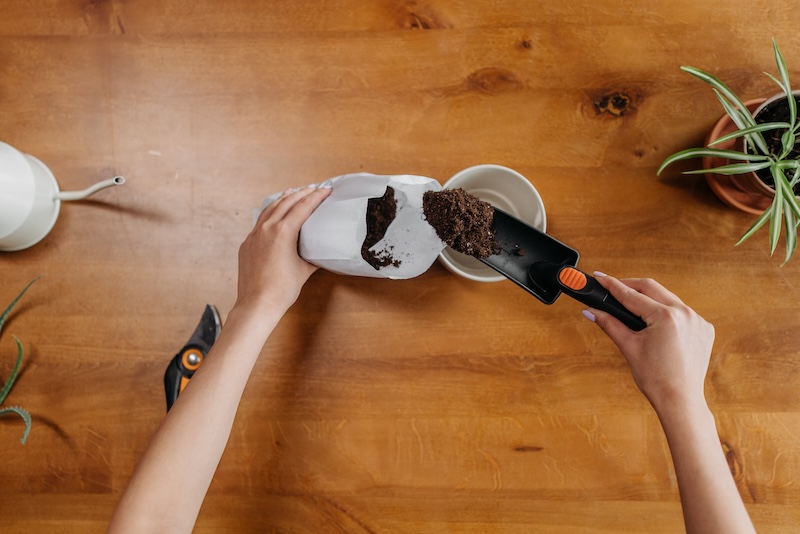Spider plants or Chlorophytum comosum are popular houseplants with long, lance-shaped foliage. A well-cared-for spider plant will grow quickly and can easily outgrow a pot. Plants needing a larger container may slow their growth and begin to decline. Spider plants can handle being slightly root-bound, but these plants generally need to be repotted every one to two years. Upgrading the plant to a larger container with fresh soil will help the plant thrive.

Potting Spider Plant
Spider plants grow from rhizomes, which are a thick, tuber-like root system. The rhizomes will appear above the soil or grow through the drainage holes when they run out of space. Inspect a new spider plant to see if the rhizomes reach beyond the nursery pot. Gently slide the plant from the nursery pot to gauge the size of the root ball and how tightly it fits in the pot.
The new spider plant can continue to live in the nursery pot if it is a good fit and has room to grow. A plant that fits tightly in its nursery pot can be moved into a new container that measures one to two inches larger. The new container must have drainage holes so excess water can flow through the pot.
Repotting Spider Plant
Rootbound is a term used to describe a plant that has outgrown its container. A spider plant is rootbound when the rhizomes reach above the soil or grow through the drainage holes. Rootbound plants will grow slowly and may decline because they lack soil and the space necessary to grow. Repot a rootbound spider plant so the plant can grow and thrive.
Spider plants are fast growing, so you can repot them basically anytime. Feel free to repot your spider plant if the planter is broken or if you want to move the plant to a planter that matches your decor. These plants work well in a hanging planter where the stolons can trail over the edge and produce offshoots. A plant in poor-quality soil can also be repotted to improve the potting mix and help the plant grow.

Best Soil For Spider Plant
These houseplants can handle various soil types but grow best with a potting mix that meets their needs. Spider plants prefer moist, well-drained soil that is loamy and neutral in pH. Most general potting mixes work well for spider plants. You can fine-tune an all-purpose potting mix by amending it with perlite, coco coir, and bark.
Spider Plant Drainage
Drainage is vital to spider plants because too much moisture will damage the rhizomes. The container should have drainage holes, and the potting mix must allow excess water to drain. Protect your furniture by using a saucer to collect water that drains through the pot, or slip a nursery pot inside of a cover pot to collect any drips.
 |
Author Alison Cotsonas - Published 12-15-2023 |
